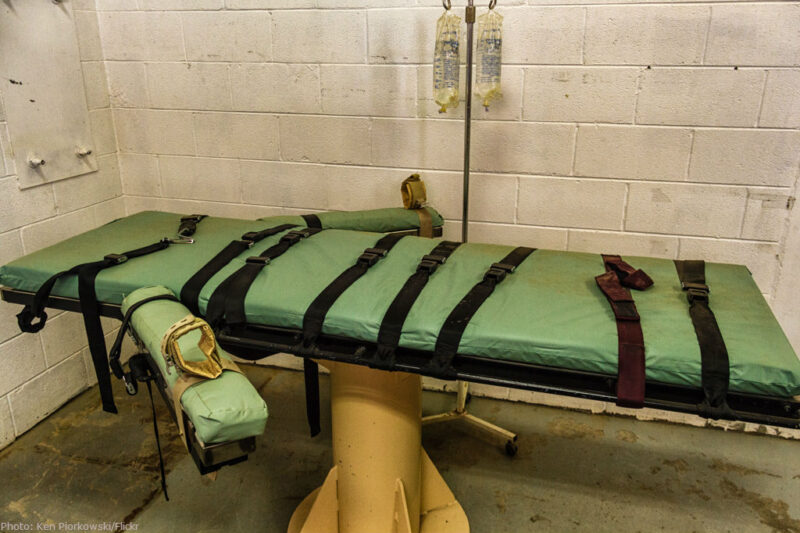
This piece originally appeared at .
The demise of the is upon us. While the Supreme Court ruled this week to allow the continued use of a controversial lethal injection drug, Justice Stephen Breyerтs sweeping invited the nation to question capital punishmentтs constitutionality. If you have any doubt about the answer, just ask Henry McCollum or Paul House.
Henry McCollum was convicted and sentenced to death in North Carolina for the murder and rape of a young girl. Paul House was convicted and condemned by the state of Tennessee for raping and murdering a woman. Both men suffered from an all-too-common syndrome in death penalty cases: They were innocent. McCollum was exonerated in 2014, and the state dropped its charges against in 2009.
But in 1986, two years after McCollum was convicted and sentenced, held him up in a separate Supreme Court decision as the kind of person who demonstrates the need for the death penalty. House was Justice John Robertsт choice in his attempt, joined by Justices Clarence Thomas and Scalia, to narrow the availability of an innocence exception to the death penalty.
Just as Justices Roberts, Thomas, and Scalia thought McCollum and House should be executed, the lower courts too often have condemned innocent people to die. No one should be killed because the government made a mistake, yet on death row have been exonerated since 1976. We know that this total, which climbs steadily every year, is much lower than the actual number of people on death row who are т or were т innocent. One study estimates that sentenced to death is innocent.
The death penaltyтs innocence problem is not lost on the American public. Support for the death penalty is at its lowest point in 30 years. A today prefer life without parole to the death penalty. have repealed the death penalty in recent years. The governors of have each suspended future executions indefinitely. As a country, we exercise the death penalty less and less т more evidence that we are moving away from capital punishment. Last year, nationwide, we had the lowest number of executions in twenty years () and the fewest new death sentences in 40 years ().
As Justice Breyer noted, geography plays a huge role in who gets a death sentence and who gets life. A tiny fraction of U.S. counties т just counties out of more than 3,000 nationwide т are responsible for sentencing the majority of people to death. The justice pointed to these stark statistics: Half of all of the new death sentences from 2004 to 2009 came from less than of the counties in the country, and all of the new death sentences in 2012 came from fewer than of the counties in this country.
The death penalty is forever entwined with the history of lynching, and racial disparities continue to taint capital punishment. Many that the race of the victim drives death penalty decisions т no surprise to the BlackLivesMatter movement. When the victims are white, are far more likely to seek the death penalty, and juries are far more likely to return , than when the victims are African-American. Prosecutors routinely prevent black people from serving on .
Justice Breyer also notes that those facing death sentences typically receive poor legal representation, making death row more likely. The personal preferences of individual prosecutors can also heavily affect who lives and who dies. Together, as Justice Breyer and Ginsburg conclude, this evidence тstrongly suggests that the death penalty is imposed arbitrarily.т
The death penalty is not only applied unfairly, it doesnтt even achieve its ostensible purpose: deterrence. After 30 years of research, there is no reliable evidence that executing people stops others from committing crimes. Justice Breyer summarizes this literature and then makes the common sense point: In our system, the death penalty is more likely to be overturned because of error and unfairness than carried out, and the alternative to the death penalty т life without parole т is severe, so why would we expect the threat of the death penalty to influence behavior?
In his dissent, Justice Breyer (joined by Justice Ruth Bader Ginsburg) issued an open invitation for cases that challenge the constitutionality of the death penalty. This is a demand that the supply can meet. Geographically arbitrary, racially biased, and contrary to American standards of decency, each new capital case follows a trail of injustice that will bring down the death penalty.


